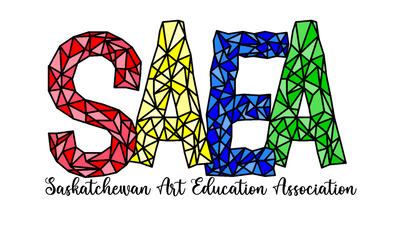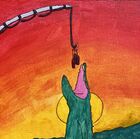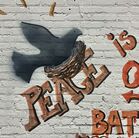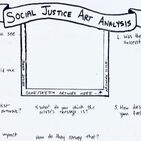Visual Art 9
In the Saskatchewan Arts Education Curriculum it is stated that in grade 9, "To support inquiry into some of the ‘big ideas’ of interest to contemporary artists in all disciplines, and to provide meaningful contexts for inquiry, a different conceptual focus has been identified for each grade. Each focus allows for purely disciplinary and/or interdisciplinary teaching and learning. . . .The focus [for grade 9 is] Taking Action. . . . Each focus is required and incorporated into the learning outcomes for that grade. If time permits, teachers and students may also choose conceptual foci unrelated to those identified. " (Ministry of Education, 2009, p.14)
Visual Art 9 Lessons
Endangered Animal Relief PaintingIn this assignment students paint a scene that illustrates why an animal is endangered. They add a sculptural relief element to their painting using model magic.
|
Graffiti-Style Social Justice ArtIn this assignment students study the history of the graffiti art movement, brainstorm social justice issues, and create an original graffiti-style artwork on paper using markers, Crayola air sprayers, stencils, and paper.
|
Social Justice Art AnalysisIn this assignment students learn about social justice art installations around the world and analyze one of these installations.
|
Visual Art 9 Outcomes
|
Cultural/Historical
CH9.1 - Investigate and discuss the role of artists in raising awareness or taking action on topics of concern. CH9.2 - Use the arts to raise awareness on topics of concern to Indigenous artists in dance, drama, music, and visual arts. CH9.3 - Investigate diversity of artistic ideas, styles, and media in contemporary arts expressions. CH9.4 - Create interdisciplinary arts expressions individually or through collaboration with peers, and examine the work of artists who create interdisciplinary expressions (e.g., sound and poetry, performance art, audio visual installations). |
Creative/Productive
CP9.10 - Create visual art works to express perspectives and raise awareness about a topic of concern to youth. CP9.11 - Select and use appropriate forms, technologies, images, and art-making processes to convey ideas about a topic of concern to youth. CP9.12 - Solve visual art problems in new and unfamiliar ways. |
Critical Responsive
CR9.1 - Respond to professional dance, drama, music, and visual art works through individual or collaborative inquiry and the creation of own arts expressions. CR9.2 - Investigate and identify ways that today’s arts expressions can inspire change. CR9.3 - Investigate and identify how arts expressions can challenge thinking about values, ideas, and beliefs. |



